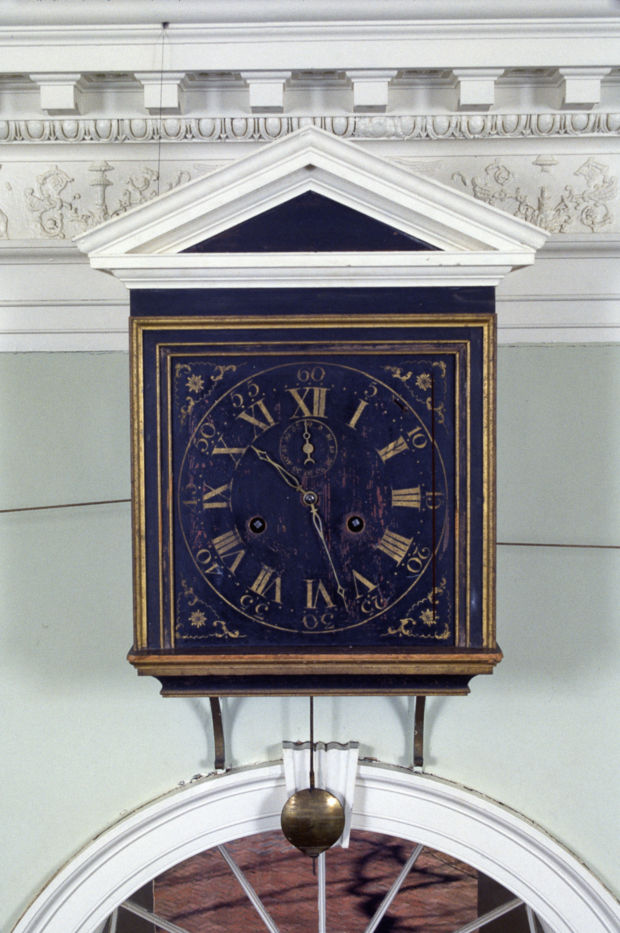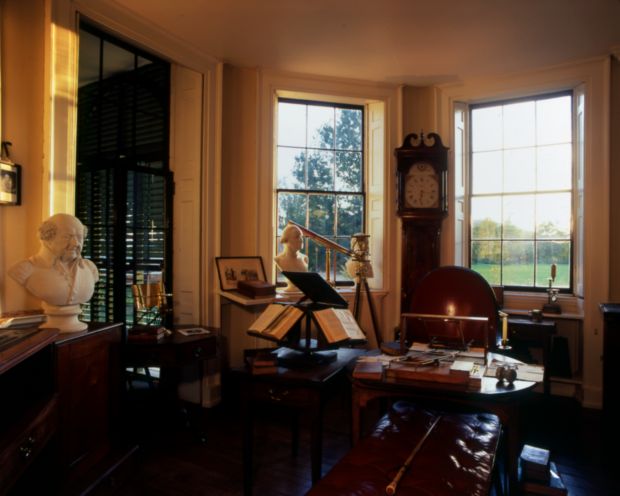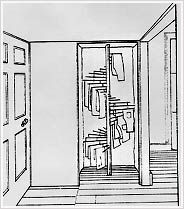Design and Gadgets
Reading Level: Elementary School
Jefferson’s mind was always busy. He had wonderful ideas for using space, light and time. He loved to design and add things to Monticello “with a greater eye to convenience.”
The Great Clock
When guests arrived at Monticello, they were greeted by the Great Clock. It was made in Philadelphia based on Jefferson’s design. It was called a seven day calendar clock. It told the time and the day of the week. As the clock weights descended down the wall of the Hall they mark off the days of the week. The clock was designed for a house in Philadelphia. When the clock was moved to Monticello there was not enough room for the weights to mark off a whole week. Jefferson needed to cut a hole in the floor of the Hall in order for the clock weights to have room for Saturday.
One face of the clock could be seen from outside. It had an hour hand so the workers could tell the time. A gong also rang the hour. It was loud enough for the field slaves to hear it three miles away. The clock’s other face was inside Monticello. It was high on the wall of the Hall. It had an hour hand, a minute hand and a second hand. To reach it, Jefferson designed a special ladder. The ladder folded up so it could be stored when not in use.
Gadgets in the Dining Room
Jefferson loved gadgets for the dining room, too. He had a revolving service door. It was built into the wall near the stairs that led to the kitchen. It had shelves. Enslaved servants placed dishes of food on the shelves. The door was then turned so the dishes ended up in the dining room. A servant placed the dishes on a dumbwaiter. Dumbwaiters were small tables with shelves and wheels. The dumbwaiters were wheeled next to each guest’s chair.
He also had devices that used pulleys to bring wine bottles directly from the basement up through the floor and into to the dining room. He put them in the sides of dining room fireplace and hid them behind little doors.
Gadgets in the Office
Jefferson also liked gadgets for his office. His swivel chair let him turn around from his desk and talk to someone. His worktable had a top that turned so he could reach his papers and books. He added a board to his portable (moveable) desk. He could lean on the board while writing. He added a drawer to hold extra supplies. And he especially loved his "Polygraph," which made an exact copy of his letters as he wrote them.
He also designed a bookstand that turned. It was crafted in the joinery at Monticello. It expanded to hold five books at one time.
Gadgets in the Bedrooms
During his years in France, Jefferson saw alcove beds. These were special beds built into walls. He liked their space-saving qualities. He added one or two alcoves in each of Monticello’s bedrooms. In his own bedroom, Jefferson hung his clothes at the end of his bed on a “turning machine.” A guest described it as a “horse with forty-eight projecting hands on which he hung his coats . . .”





